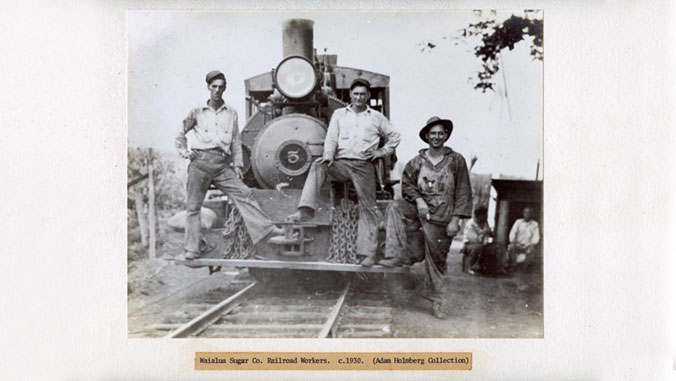
A unique exhibit that seeks to facilitate dialogue between the labor movement in Hawaiʻi and the current Native Hawaiian Sovereignty movements, was launched at University of Hawaiʻi at Mānoa William S. Richardson School of Law library as a digital exhibit and is open to the public.
As part of the exhibit, an online webinar on Wednesday, September 2, from 3 to 5 p.m. will feature a panel of community organizers and scholars discussing Hawaiʻi’s labor history. Participants can register for the webinar online.
The exhibit will showcase archival collections on labor history from the Center for Labor Education and Research at UH West Oʻahu, UH Mānoa’s Ethnic Studies Center for Oral History and the UH law library.
It will also look at whether the contemporary Hawaiian movements to protect lands have the same appeal to broader multi-ethnic communities that the early plantation-based labor movement did.
Organizers Ellen-Rae Cachola, an archives manager, Leslie Lopez, an associate specialist at UH West Oʻahu’s Center for Labor Education and Research, and Micah Mizukami, associate director of UH Mānoa’s Center for Oral History, reflected on the history of the interracial labor strikes during the 1940s and 1950s.
“We discussed how amazing it was for labor organizers to cross significant lines of racial and class division in order to unify to strike for unionization, better wages and working conditions,” said Cachola. “It must have taken a lot of work to build relationships and trust in a society that was organized according to the plantation oligarchic, hierarchical system that classified and divided on race, class and gender.”
To build upon the histories in the exhibit, the webinar will feature scholars and organizers of diverse backgrounds, specializing in Hawaiian politics, ethnic studies, race relations, labor and immigration to speak to contemporary relations between labor and indigenous movements.
“We know that Hawaiʻi has an illustrious labor history that challenged the oligarchical power structure of Hawaiʻi during the Territorial era,” added Cachola. “But have there been changes in Hawaiʻi’s socio-economic demographics since the 1950s that created inequalities across our diverse, multi-ethnic societies, challenging the sense of unity that was fostered in the labor strikes of the 1940s-1950s?”
For more see the UH law school website.

